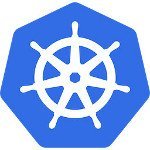Pause and Stop Pods in Kubernetes
In Kubernetes, managing pods involves stopping and pausing them for maintenance or troubleshooting. Let us delve into understanding how to pause and stop pods in Kubernetes.
1. What is Kubernetes?
Kubernetes, often abbreviated as K8s, is an open-source container orchestration platform that automates the deployment, scaling, and management of containerized applications. It was originally developed by engineers at Google and is now maintained by the Cloud Native Computing Foundation (CNCF), a part of the Linux Foundation.
Containers are a lightweight and portable way to package and run applications and their dependencies, ensuring consistent behavior across different environments. Kubernetes provides a framework for managing these containers, allowing you to abstract away the underlying infrastructure and focus on defining how your applications should be deployed and managed.
2. Stopping a Pod in Kubernetes
Stopping a Pod in Kubernetes involves terminating its container, halting its processes, and releasing its resources. This can be useful for maintenance tasks, troubleshooting, or scaling down resources.
To stop a Pod, you can use the kubectl delete pod <pod-name> command. Replace <pod-name> with the name of the Pod you want to stop. This command sends a request to Kubernetes to delete the specified Pod. Kubernetes then terminates the container within the Pod, stopping its processes and freeing up resources.
2.1 Example
For example, if you have a Pod named my-pod that you want to stop, you would run:
kubectl delete pod my-pod
This would stop the my-pod Pod, terminating its container and releasing its resources.
2.2 Forcefully Stopping a Pod in Kubernetes
When you need to forcefully stop a Pod in Kubernetes, including its termination grace period, you can use the kubectl delete pod <pod-name> --force command. The --force flag is used to delete a Pod immediately, even if it is not in the Terminated state. For example, if you have a Pod named my-pod that you want to stop forcefully, you would run:
kubectl delete pod my-pod –force
This command sends a request to Kubernetes to delete the specified Pod forcefully. Kubernetes immediately terminates the container within the Pod (regardless of its current state), stopping its processes and releasing its resources.
3. Pausing a Pod in Kubernetes
Pausing a Pod in Kubernetes involves freezing its processes without terminating its container. This can be useful for debugging or inspecting the state of the container without stopping its execution. To pause a Pod, you can modify its Pod spec by setting the spec.paused field to true. Setting spec.paused to true instructs Kubernetes to freeze the processes of the container within the Pod without terminating it.
3.1 Example
For example, if you have a Pod named my-pod and you want to pause it, you can modify its spec to include the paused: true setting:
apiVersion: v1 kind: Pod metadata: name: my-pod spec: containers: - name: my-container image: my-image paused: true
This would pause the my-pod Pod, freezing its processes while keeping the container intact.
4. Conclusion
In the realm of Kubernetes management, understanding how to control the lifecycle of pods is fundamental. Two key aspects of this control are stopping and pausing pods, each serving distinct purposes in managing containerized applications.
Stopping a pod involves terminating its container, effectively halting all processes running within it, and releasing the associated resources. This action is commonly employed for maintenance tasks, troubleshooting, or when scaling down resources is necessary.
On the other hand, pausing a pod offers a more nuanced approach to managing container execution. Rather than outright termination, pausing a pod freezes its processes while maintaining the container’s state. This functionality proves invaluable for debugging or inspecting container behavior without disrupting its ongoing operations
In essence, stopping and pausing pods empowers Kubernetes users to maintain optimal control over their containerized applications. Whether it’s for routine maintenance tasks, troubleshooting intricate issues, or fine-tuning application performance, understanding these functionalities ensures smoother operations and enhanced reliability in Kubernetes environments.


